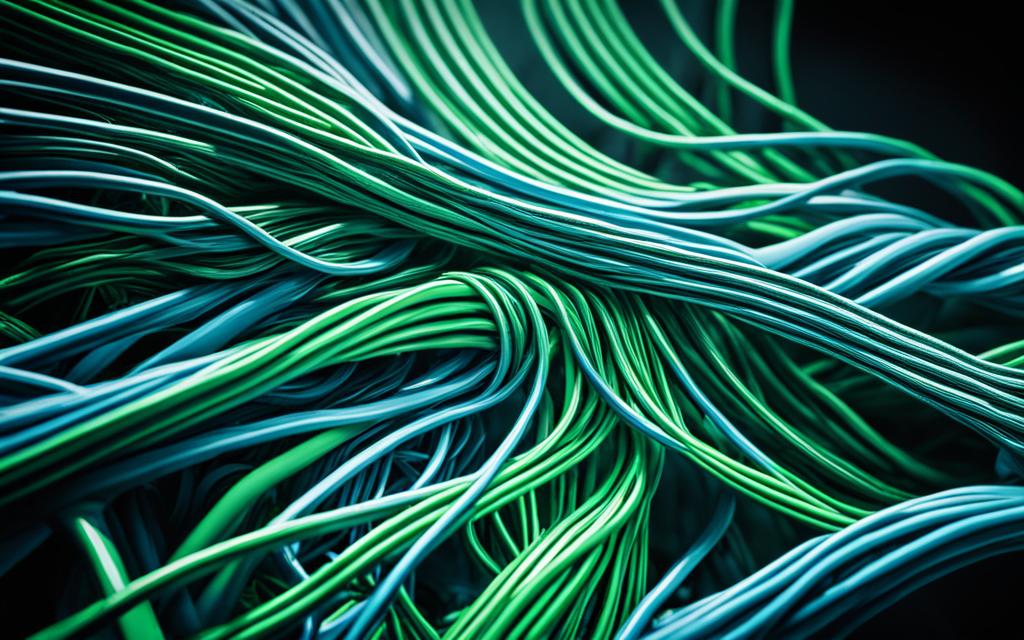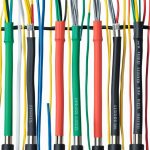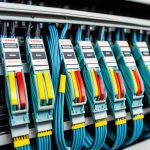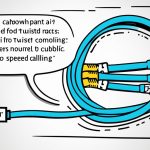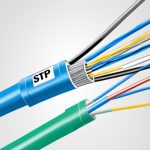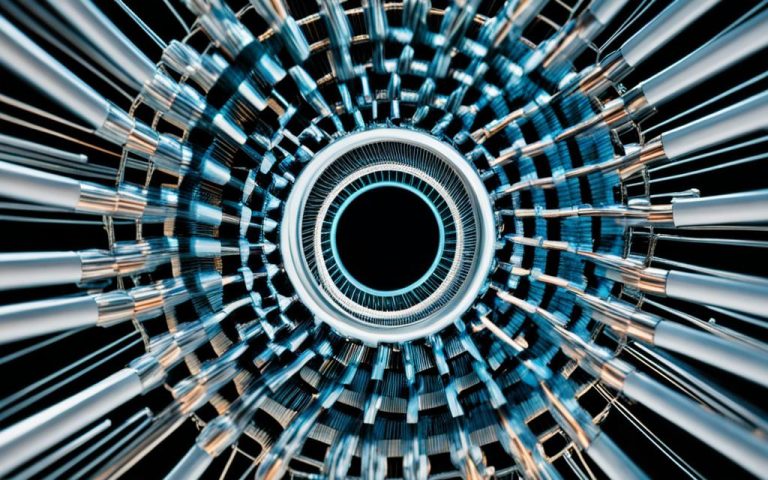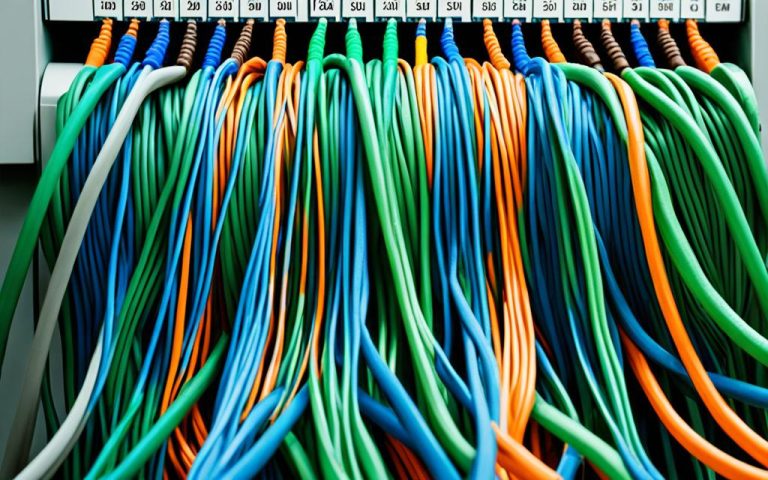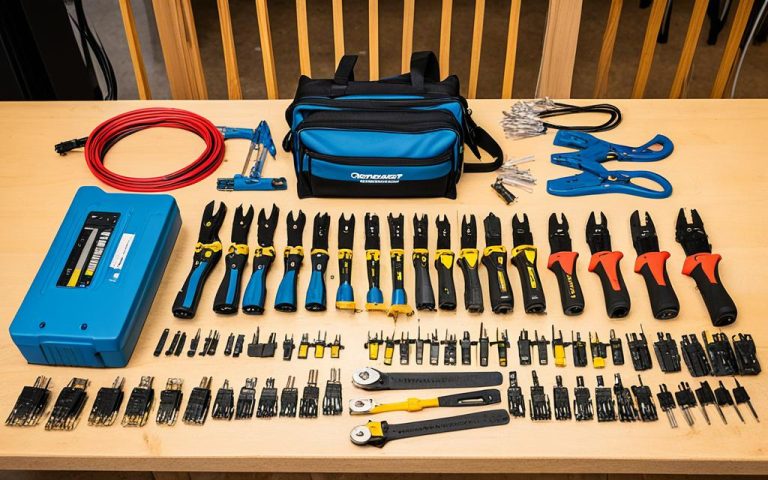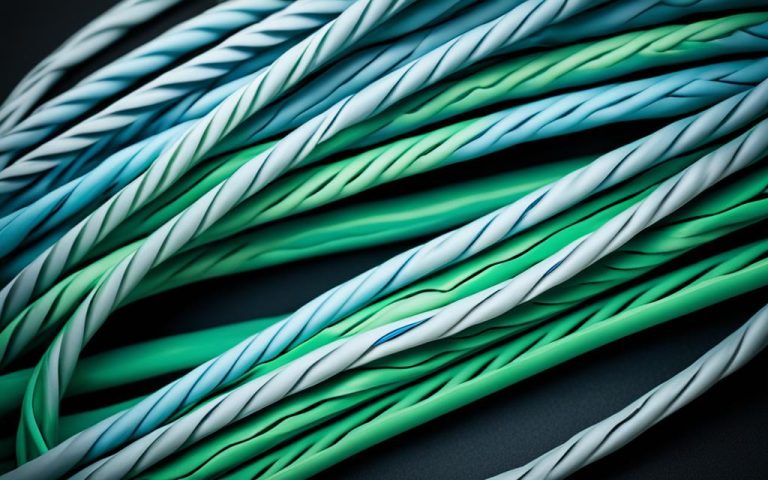Power over Ethernet (PoE) is revolutionizing the way we deliver power and data in twisted pair networks. By combining power and data transmission into a single process, PoE offers efficient energy solutions that simplify network installations and enhance device placement flexibility.
With PoE, devices can receive power over the same cable that transmits their data, eliminating the need for separate power supplies. This not only reduces the clutter of additional power outlets and electrical wiring but also streamlines the installation and maintenance processes, resulting in cost savings.
PoE utilizes existing Ethernet cabling to deliver both data and electrical power. Power is injected onto the cable at the source and extracted by the receiving device, ensuring compatibility and safety. The IEEE 802.3af and IEEE 802.3at standards govern the power levels transmitted, safeguarding devices from receiving excessive power.
The versatility of PoE enables a wide range of applications, including IP cameras, VoIP phones, and wireless access points. With the latest standard, IEEE 802.3bt, capable of delivering up to 90W of power, PoE is poised to support devices with higher energy demands.
As technology evolves, Power over Ethernet continues to shape our networked world, offering efficiency, simplicity, and flexibility. It paves the way for innovative solutions yet to be imagined and demonstrates the ingenuity of network engineering.
The Genesis of PoE
The inception of Power over Ethernet (PoE) can be traced back to the desire to minimize the clutter and complexity of network installations. As technology evolves, the number of devices requiring both an electrical and data connection continues to increase, creating a need for a unified solution. PoE emerged as the answer, revolutionizing network installations by enabling devices like IP cameras, VoIP phones, and wireless access points to be powered over the same cables that carry their data.
PoE provides a streamlined and efficient approach to network deployment, eliminating the need for separate power supplies and reducing the overall complexity of infrastructure. By leveraging the existing Ethernet cabling that is already in place, PoE simplifies installations and facilitates flexible device placement.
With PoE, you can power your networked devices while simultaneously transmitting data, resulting in a seamless and unified solution for network installations.
The adoption of PoE has transformed the way we think about network connectivity. It has empowered organizations to optimize their resources and achieve cost savings by reducing the need for additional electrical wiring and power outlets. With PoE, network installations have become more streamlined, efficient, and adaptable to evolving technology needs.
As the demand for networked devices continues to grow, PoE provides a unified solution for powering and connecting these devices, simplifying installations and improving overall network efficiency. Whether it’s in a workplace, a smart home, or an industrial setting, PoE offers a reliable and scalable approach to network deployment, delivering power and data over a single cable.
Benefits of Power over Ethernet:
- Simplified network installations
- Reduction in infrastructure complexity
- Cost savings through a streamlined approach
- Flexible device placement
- Improved energy efficiency
By embracing Power over Ethernet, organizations can enjoy the benefits of a unified solution that enhances network performance, simplifies installations, and provides a solid foundation for future technological advancements.
How PoE Works
Power over Ethernet (PoE) leverages existing Ethernet cabling to deliver both data and electrical power, providing a seamless solution for powering networked devices. The process involves injecting power onto the cable at the source and extracting it at the receiving device.
When it comes to PoE, it’s essential to adhere to the standards set by the Institute of Electrical and Electronics Engineers (IEEE). The most widely used standards for PoE are IEEE 802.3af and IEEE 802.3at. These standards ensure compatibility and safety by specifying the amount of power that can be transmitted and protecting devices from excess power.
By utilizing PoE, the need for additional power outlets and separate electrical wiring is significantly reduced, resulting in cost savings during installation and maintenance.
Power Injection and Extraction
Power injection occurs at the network switch or an intermediary device known as a PoE injector. The injector adds electrical power to the data signal, combining both into a single stream flowing through the Ethernet cable. This power is carried through the unused wire pairs within the cable.
On the receiving end, the powered device (PD) extracts the electrical power from the Ethernet cable and utilizes it to operate. These PDs include devices such as IP cameras, wireless access points, and VoIP phones, all of which can now be conveniently powered through the Ethernet connection.
It’s important to note that the maximum power delivery and distance depend on the specific PoE standard in use. IEEE 802.3af enables the delivery of up to 15.4 watts of power, while IEEE 802.3at, commonly referred to as PoE+, supports up to 30 watts. These power limits are suitable for a wide range of networked devices.
The Benefits of PoE
Implementing Power over Ethernet offers numerous advantages for network installations. By consolidating both power and data transmission into a single cable, PoE eliminates the need for separate power supplies, reducing clutter and simplifying deployments.
The use of existing Ethernet cabling significantly lowers installation costs, as it eliminates the need for additional electrical wiring and power outlets. This cost-effective solution not only saves time during initial setup but also reduces ongoing maintenance efforts.
Furthermore, PoE empowers network administrators with greater flexibility in device placement. Devices no longer need to be within close proximity to a power source, enabling strategic deployment in areas that may have limited access to electrical outlets.
| Advantages of PoE |
|---|
| Consolidates power and data transmission |
| Reduces the need for separate power supplies |
| Lowers installation costs by utilizing existing Ethernet cabling |
| Enables flexible device placement |
Overall, Power over Ethernet offers a more efficient, cost-effective, and flexible solution for powering networked devices. Its integration into existing Ethernet infrastructure makes it an ideal choice for various applications, including IP surveillance systems, wireless networks, and building automation systems.
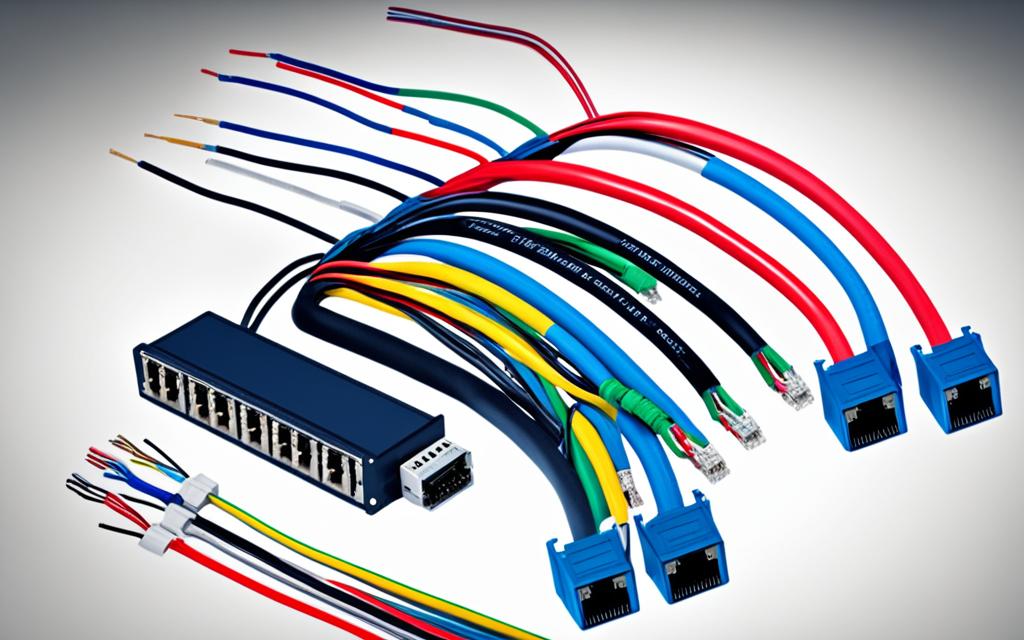
The Advantages of PoE
Power over Ethernet (PoE) offers numerous benefits that make it a compelling solution for modern networks. By combining power and data delivery into a single cable, PoE eliminates the need for additional power outlets and electrical wiring, resulting in significant cost savings for installation and maintenance.
One of the key advantages of PoE is its versatility in device placement. With traditional power sources, the location of networked devices is often dictated by the availability of power outlets. However, with PoE, devices can be placed anywhere within reach of an Ethernet cable, providing unparalleled flexibility and simplifying network design and installation.
PoE supports a wide range of devices, making it an ideal solution for various applications. Whether it’s IP cameras for surveillance, VoIP phones for seamless communication, or wireless access points for efficient connectivity, PoE can provide power to these devices, eliminating the need for separate power supplies and streamlining the setup and management process.
Overall, the advantages of Power over Ethernet – including cost savings, device placement flexibility, and versatility in applications – make it a compelling choice for businesses looking to optimize their network infrastructure.
Take a look at the table below for a comparison of traditional power delivery and Power over Ethernet:
| Traditional Power Delivery | Power over Ethernet (PoE) |
|---|---|
| Requires additional power outlets and electrical wiring | Eliminates the need for additional power outlets and electrical wiring |
| Restricts device placement based on power availability | Provides flexibility in device placement, enabling optimal network design |
| Separate power supply for each device | Streamlines setup and management with centralized power delivery |
| Limited support for specific devices | Supports a wide array of devices, catering to various applications |
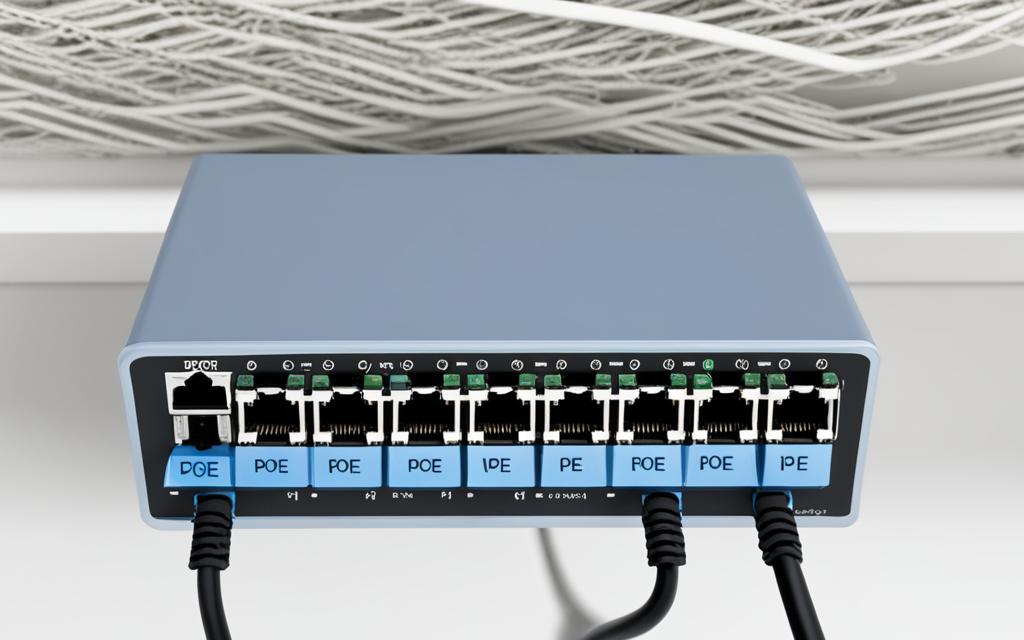
Quote:
“Power over Ethernet revolutionizes the way we power and connect networked devices. It offers cost savings, flexibility in device placement, and support for a wide range of applications, making it an essential technology for modern networks.”
The Future of PoE
As technology advances, Power over Ethernet (PoE) continues to evolve, setting the stage for a more interconnected and efficient networked world. The latest standard, IEEE 802.3bt, expands the power capabilities of PoE to meet the higher energy demands of a wide range of networked devices.
The integration of networked devices, ranging from security cameras and access points to smart lighting systems and IoT devices, has been made easier and more versatile through PoE. With the introduction of IEEE 802.3bt, PoE can now deliver up to 90W of power, providing a robust solution for devices with higher energy requirements.
With the growing demand for smart homes and smart cities, the ability to power and connect a diverse set of devices seamlessly becomes crucial. PoE’s evolution paves the way for innovations yet to be imagined, propelling the integration of networked devices to new heights. The combination of simplicity, efficiency, and flexibility offered by PoE stands as a testament to the ingenuity of network engineering.
FAQ
What is Power over Ethernet (PoE)?
Power over Ethernet is a technology that combines power and data delivery into a single process. It allows devices to receive power over the same cable used for transmitting data, eliminating the need for separate power supplies.
How does PoE work?
PoE works by injecting power onto the Ethernet cable at the source and extracting it at the receiving device. Standards such as IEEE 802.3af and IEEE 802.3at ensure compatibility and safety by specifying the amount of power that can be transmitted and protecting devices from receiving too much power.
What are the benefits of PoE?
There are several benefits of using PoE. Firstly, it reduces the need for additional power outlets and electrical wiring, resulting in cost savings in installation and maintenance. Secondly, PoE offers flexibility in device placement as power constraints no longer dictate their location. Lastly, PoE supports a wide range of devices, making it a versatile solution for applications like IP cameras, VoIP phones, and wireless access points.
What is the future of PoE?
The future of PoE looks promising with the introduction of the latest standard, IEEE 802.3bt. This standard expands the power capabilities of PoE to cater to devices with higher energy demands. It holds the potential to further integrate our networked world by powering a broader spectrum of devices and paving the way for new innovations.

